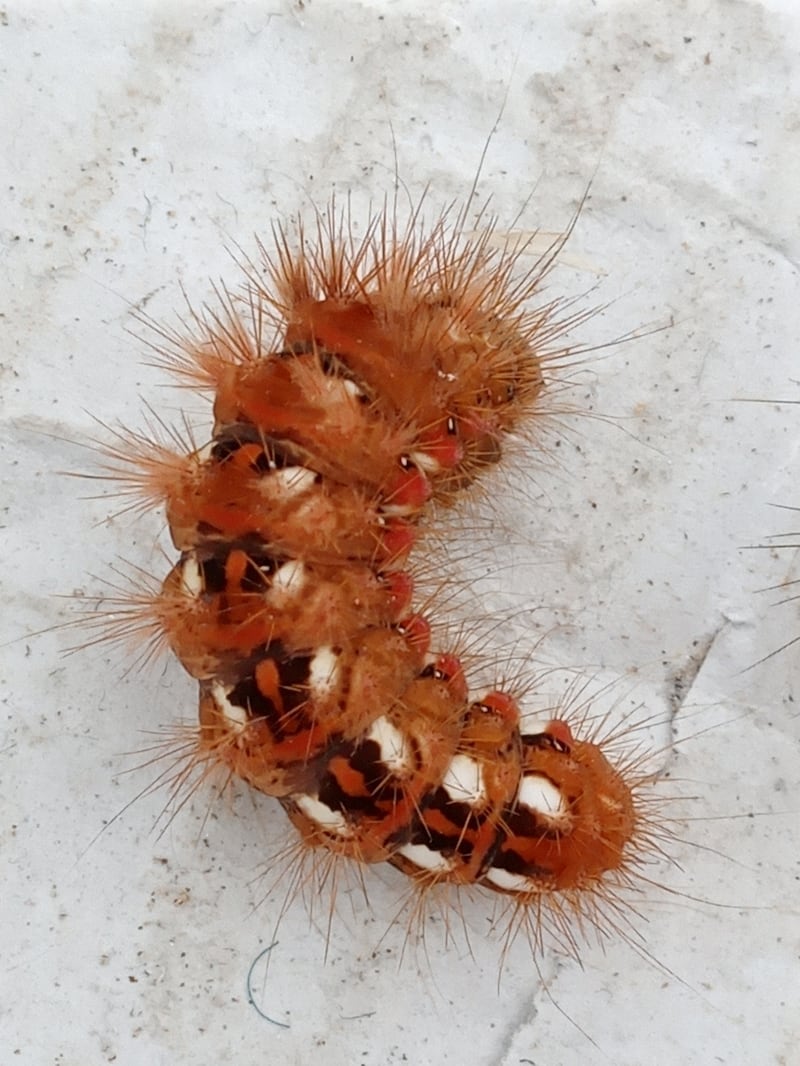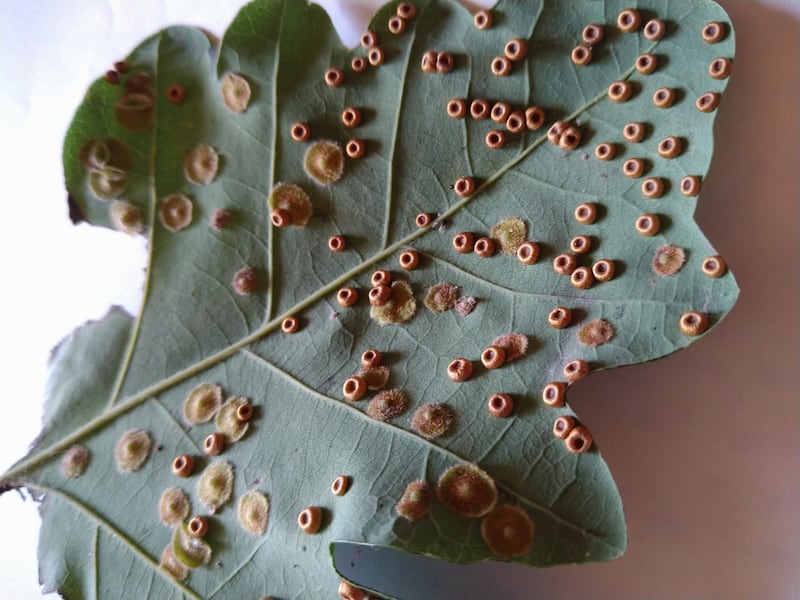This ladybird was on an apple tree in Donnybrook, Dublin. Is it a harlequin ladybird or some other? And, given that harlequins are an invasive species, what does one do if one finds one? – Dermot Stokes
One squishes invasive harlequins if one is really sure that's what they are. They eat our native ladybirds among other things. The harlequin is a very variable species and has several colour forms, including black with four red spots and orange with 15-21 spots. But it is the only ladybird with a broad ridge running across the ends of the hard wing covers, and this one has these.

We found this unusual caterpillar in the back garden. We've never seen anything like it; can you help us identify it? – Beth, Sophia and Jack Love
It is the very spectacular caterpillar of the rather dull knot grass moth, which, while it may indeed munch on knot grass, is also partial to lots of other plants, including docks, plantains, wild strawberry and even rhubarb.

I spotted these growing in a tree stump in my parents' back garden in Blackrock, Co Dublin. They don't look like any mushroom I've ever seen. What are they and are they poisonous? – Dan Killeen
My mycology lecturer in UCD, Hubert Fuller, tells me that it is an ascomycete fungus called dead man's fingers. It is common and typically found in gardens/parks growing on rotting beech stumps. Not dangerous, but inedible.

This leaf fell off our oak tree and I'm interested to know what has affected it. – Rosemary Lindsay, Greystones
It has been attacked by the silk button gall wasp. These tiny wasps lay their eggs in the veins of oak leaves, causing these hemispherical galls, which contain the grubs, to form.

This lovely picture of a stick insect in a neighbour’s garden was taken by Patrick Maher.
Have you a nature query, observation or photo you would like to share with The Irish Times? Submit it, with location of the image, via our website irishtimes.com/eyeonnature








